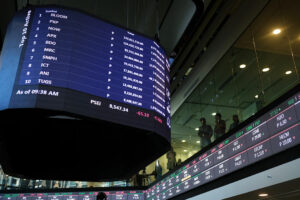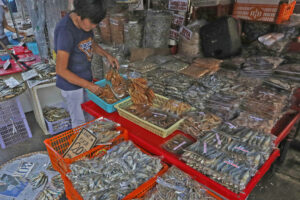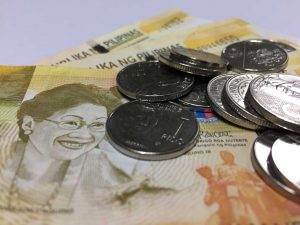The Philippines will implement a one-month rice import window in January and reimpose a ban on imports from February to April, as the government seeks to support the prices of rough rice in the 2026 harvest season.
Agriculture Secretary Francisco P. Tiu Laurel, Jr. said the department is looking to allow about 300,000 metric tons (MT) of rice imports in January 2026, a plan “more or less” approved by President Ferdinand R. Marcos, Jr. following the extension of the rice import ban through end-2025.
“We have to import by January just to be sure,” Mr. Tiu Laurel told lawmakers in Filipino at a House of Representatives hearing. “Our imported stocks, which we stopped in September, are estimated to run out by the end of November and we’ll be running on local stocks in December.”
“That kind of situation is quite risky,” he added.
Mr. Marcos had earlier ordered a 60-day suspension of rice imports starting Sept. 1 to support Filipino farmers during harvest season and to stabilize rice prices. The suspension was originally supposed to end on Nov. 2 and applies only to regular milled and well-milled rice.
“We will extend the rice import stoppage until the end of 2025,” Mr. Tiu Laurel said.
He said the Philippines, the world’s top rice buyer, had imported around 3.5 million MT of rice as of end-September, overshooting this year’s rice import target limit by 800,000 tons.
“We should be at the 2.7 [million MT levels] in imported rice. So, we are… in excess,” he said. “The monthly import volume should only be around 300,000 tons or 3.6 million MT a year.”
Monthly rice imports ranged from 305,000 MT to 517,800 MT in the first eight months of the year, Agriculture Undersecretary Christopher V. Morales said at the same congressional hearing.
The Philippines last year imported about 4.7 million MT of rice, and the US Department of Agriculture in August projected the Southeast Asian nation to bring in about 4.9 million MT of rice for the whole year.
Mr. Tiu Laurel said the Department of Agriculture’s (DA) hands are tied when it comes to regulating rice imports into the country after it was liberalized in 2019 by the Rice Tariffication Law, which replaced quota restrictions with tariffs.
“We have to manage our stocks and our importation versus our production… Full liberalization only puts us in this situation,” he said, alluding to falling farmgate prices of unhusked rice due to the entry of foreign rice imports.
The farmgate price for palay fell by 27.8% to PHP 17.11 per kilo in August from the PHP 23.71 per kilo last year, data from the Philippine Statistics Authority showed.
“In my opinion, we can’t liberalize importation because we’re competing with our own production,” said Mr. Tiu Laurel. “We need to calibrate our imports. We should prioritize our local market first.”
DA farmgate price monitoring data last week showed that palay prices ranged from as low as PHP 7.50 to as high as PHP 18.20 per kilo, while dry rough rice fetched between PHP 11.09 and PHP 25 per kilo, Mr. Morales said.
Mr. Tiu Laurel also said that policymakers should consider hiking the rice tariffs after Mr. Marcos last year cut tariffs to 15% from 35% until 2028 to tame rice prices.
“Our wish is for tariffs to go up again. But this is still being studied by our economic managers, along with its implications,” he said.
The DA chief said the decision to extend the rice import ban until yearend gives the government ample time to determine the appropriate tariff hike, while avoiding potential market shocks.
Meanwhile, the Finance department is still evaluating whether to restore higher rice tariff rates or maintain the current rates, Finance Undersecretary Karlo Fermin S. Adriano said, noting the government could lose about P20 billion in annual revenues under the current tariff level.
“On the revenue foregone due to the import ban, the range is about PHP 1.4 [billion] to PHP 2 billion every month,” he said at the same House hearing.
The decision to extend the rice import ban until yearend may benefit farmers under normal weather conditions, but recent typhoons threaten domestic output and could undermine the country’s ability to meet consumer demand, Roy S. Kempis, retired agriculture economics professor at the Pampanga State Agricultural University, said.
“An extension may be catastrophic once you include in the decision equation the adverse effects of weather conditions,” he said in a Viber message.
For his part, Mr. Morales said the Philippines could have around 3.24 million MT to 4.06 million MT of rice by the end of 2025, enough to cover national consumption for about 85-106 days.
Avoiding rice imports could also strain the Philippines’ trade relations with key suppliers such as Vietnam, former Agriculture Undersecretary Fermin D. Adriano said.
“Sooner or later an exporting country, like Vietnam, will get mad at us,” he said in a Viber message. “We import almost 90% of our rice from Vietnam, and because of our action, it is seeking alternative markets for their rice.”
The Philippines is Vietnam’s top rice export market, shipping about 2.73 million MT in the first nine months of 2025, according to the Bureau of Plant Industry as of Sept. 24.
“Our sources of imported rice may not be quick enough to supply our rice needs when vicious typhoons come, because they could have discounted the Philippines as a consistent buyer,” Mr. Kempis said.
Extending the rice importation could also lead to higher rice prices in the first months of next year due to a possible shortage, said Mr. Adriano.
“We might experience higher rice prices and then limited inventory by the beginning of next year, which will result in a temporary shortage,” he said.
Raul Q. Montemayor, national manager of the Federation of Free Farmers, said banning rice imports alone won’t be sufficient to support local farmers, stressing the need to raise tariffs on imported rice to ensure long-term protection for domestic producers.
“Banning imports is very imprecise. Even if imports stop at harvest time, prices will still be low if importers have brought in large volumes before the seasonal ban, resulting in congested warehouses and tie-up working capital,” he said in a Viber message. “Still, it can help avoid overimportation but tariff rates will also be crucial.” —± Kenneth Christiane L. Basilio, Reporter







 DOWNLOAD
DOWNLOAD














